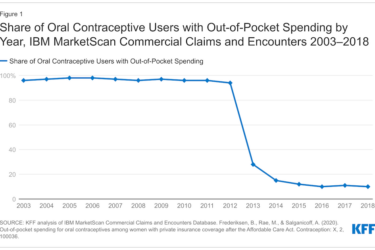
Click to enlarge.
Here are two issues to watch in the coming year: How many employers will drop health insurance coverage in the next five years and how much will employers’ health benefit costs rise in 2014?
These issues jumped out from the results of the annual survey by benefits consultant Mercer. Within five years, 31 percent of small employers believe they will drop health insurance coverage, the survey showed. Mercer defines small employers as having 10 to 499 workers. The 31 percent level is up from the 22 percent of responding small employers who said last year they planned to drop health insurance coverage and up from the 19 percent who said they would drop health benefits in 2011, Mercer said.
Beth Umland, Mercer’s director of research for health and benefits, offered more detail. “While 31 percent of employers with 10 to 499 employees say it’s likely they will terminate, when we look at just those companies with 50 to 499 employees, that number falls to 21 percent,” she said. “The smaller the employer, the more likely they are to say they will drop.
“For example, among respondents with 10 to 49 employees (these are the employers that can drop their plans without paying the penalty under the Affordable Care Act), 34 percent said they would drop their benefit plans. Of these, 17 percent are very likely, and 18 percent are likely to do so,” she added. “For companies with 50 to 199 employees, 23 percent said they would drop their benefit plans (6 percent very likely and 17 percent likely).
“Then, there’s a big drop once you reach employers with 200 to 499 employees,” Umland explained. “Just 12 percent said they would do so (3 percent very likely and 9 percent likely).
Tracy Watts, a senior partner at Mercer, added that if an employer has 50 or more full-time equivalent employees and does not offer coverage, that company would pay a penalty when the ACA’s employer mandate becomes effective in 2015.
Those small employers with fewer than 50 employees could avoid the penalty by paying a portion of their employees’ benefits on the SHOP exchange where subsidies may be available for some employers.
The employer mandate (officially called an Employer Shared Responsibility Payment) calls for any employer with more than 50 employees to offer affordable health insurance coverage in 2015 or pay a penalty of $2,000 or $3,000 per worker depending on the employer’s circumstances.
Among large employers (which Mercer defines as having 500 or more workers) only 6 percent believe they will end employee health benefit offerings within the next five years, the survey shows.
On the issue of costs, the annual survey shows that employers expect the average cost of health benefits per worker to rise by 5.2 percent in 2014 after rising just 2.1 percent this year and 4.1 percent in 2012. A chart that accompanies the survey results shows the trend for employee benefit costs versus inflation and workers’ earnings since 1990.
Among responding companies, the average per-employee cost for health care benefits was $10,779 this year. This figure includes the employer and employee’s contributions for medical, dental, and other benefits, Mercer says.
In Business Insurance, Jerry Geisel explained that cost increases were slower than normal this year because employers shifted more costs to workers through consumer-directed health plans (CDHPs). “This year, 18% of employees were enrolled in CDHPs, up from 16% in 2012 and just 8% in 2008,” he wrote. “With CDHPs, in which a health savings account or health reimbursement arrangement is linked to a high-deductible plan, employers can significantly cut health costs because CDHPs cost about 20% less than traditional plans, such as preferred provider organization coverage.”
Employers believe costs rose slowly this year for another reason: They gave workers financial incentives such as cash or lower premiums to enroll in health management programs or to complete health assessments. These programs help employers increase the likelihood of detecting medical problems early, Geisel wrote.
One other interesting result from the survey is that enrollment in CDHPs now equals enrollment in health maintenance organizations (HMOs). Among all employees, 18 percent are in CDHPs, and 18 percent are in HMOs. Mercer put all of the remaining 64 percent together. These are employees in indemnity, point of service, and preferred provider organization plans.
Mercer sent the survey to public and private employers with at least 10 employees, and 2,842 employers completed it in late summer. That’s when most employers have a good idea about how much health insurance will cost for the year, Mercer said.









